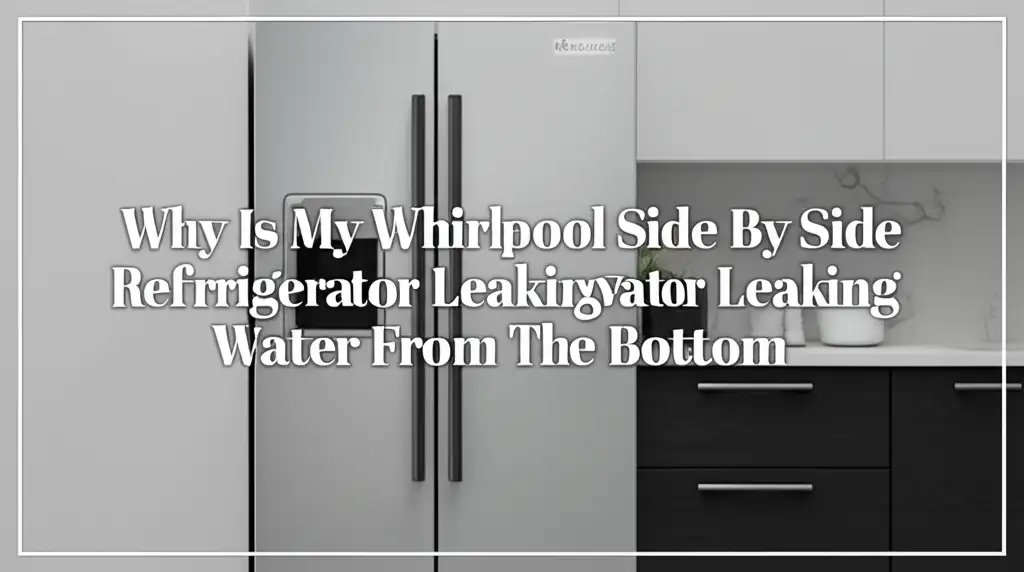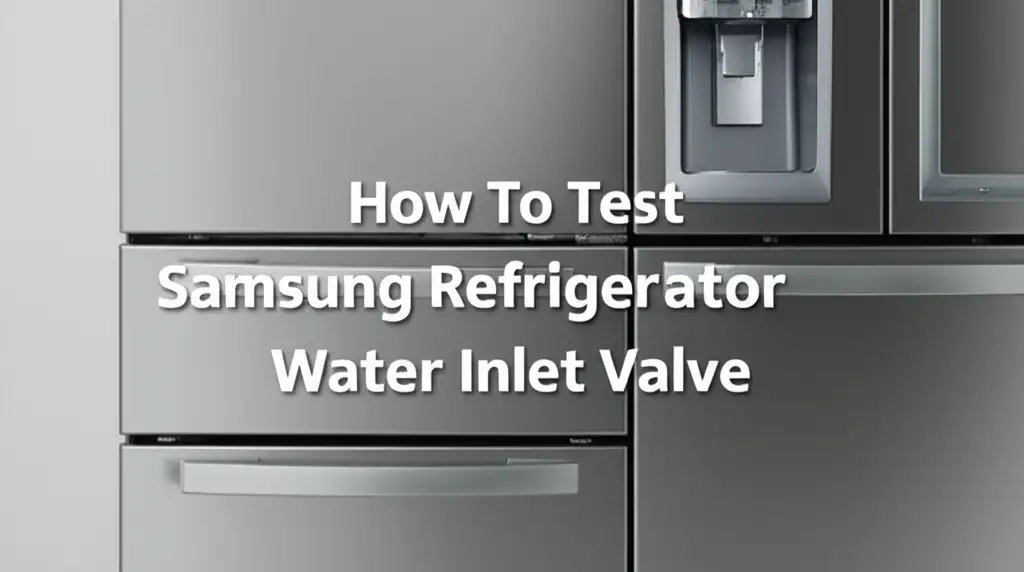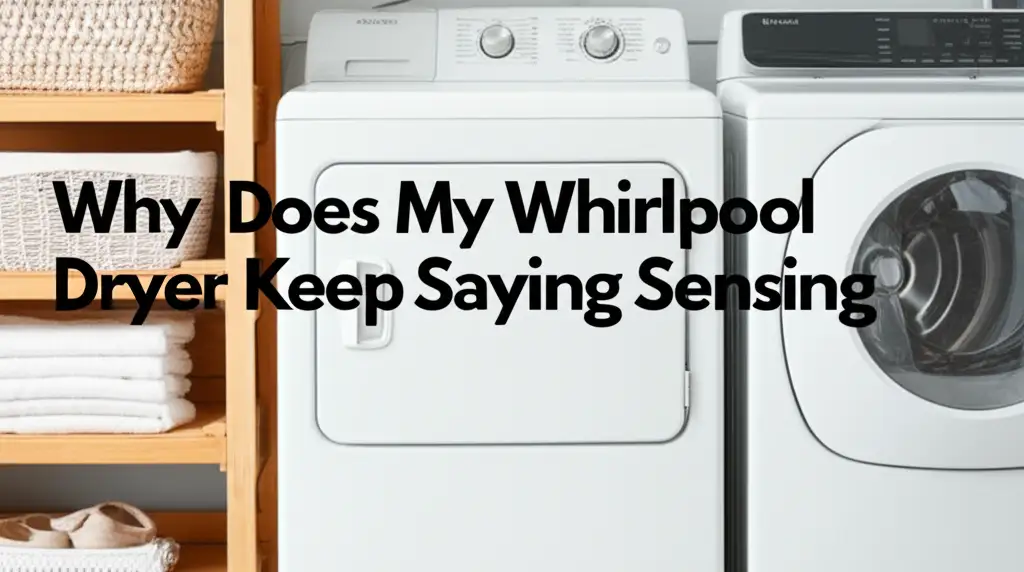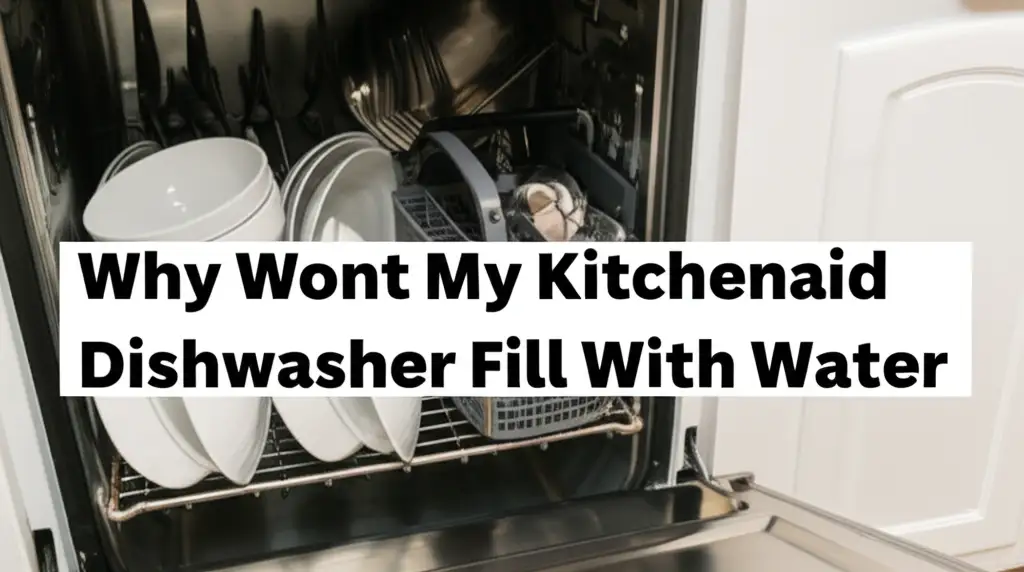· Todd Martin · Appliance Repair · 18 min read
How To Test Lg Refrigerator Water Inlet Valve
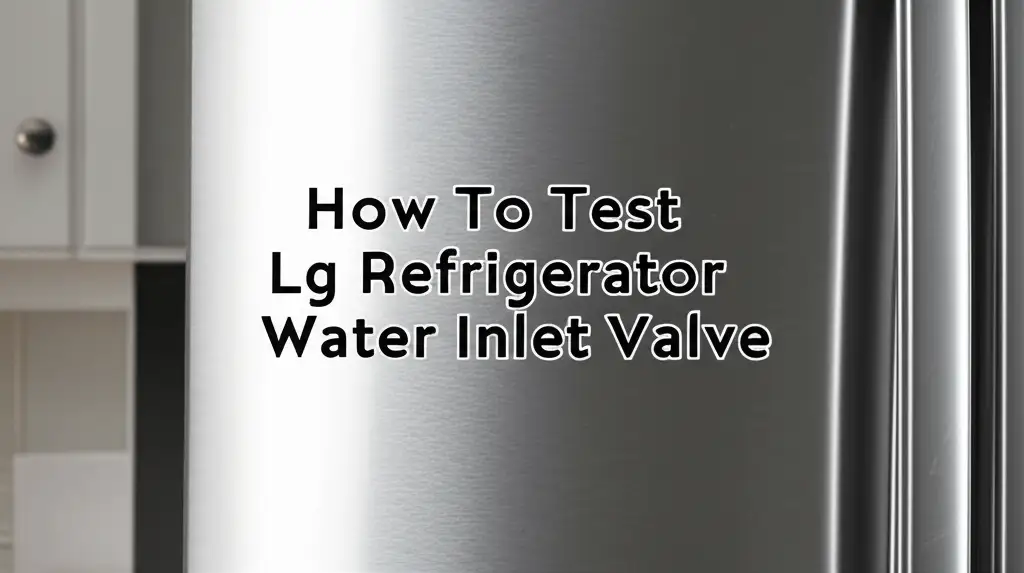
Testing Your LG Refrigerator Water Inlet Valve for Optimal Performance
Imagine wanting a cold glass of water from your LG refrigerator, but nothing comes out. Or perhaps your ice maker has stopped producing ice. These common issues often point to one critical component: the water inlet valve. This small part controls the water flow into your refrigerator for both the dispenser and the ice maker.
A malfunctioning LG refrigerator water inlet valve can be frustrating. Thankfully, diagnosing this problem is often a straightforward DIY task. You do not always need to call a technician. Understanding how to test an LG refrigerator water inlet valve helps you save time and money. This guide covers common symptoms, necessary tools, and step-by-step testing procedures. I will walk you through electrical tests and physical inspections. You will gain the knowledge to identify and fix the problem.
Takeaway
- Identify Symptoms: Watch for no water, slow water, leaks, or ice maker failure.
- Gather Tools: You need a multimeter, screwdrivers, and basic safety gear.
- Prioritize Safety: Always unplug the refrigerator and shut off water before starting.
- Locate the Valve: Find the valve at the back or bottom of your LG refrigerator.
- Perform Electrical Tests: Check solenoid resistance (Ohms) and voltage (ACV) when activated.
- Inspect Physically: Look for clogs, cracks, or calcium buildup.
- Consider Other Causes: Water filters, lines, or control boards can also cause issues.
- Replace if Faulty: A failed valve needs replacement for water flow restoration.
To test your LG refrigerator water inlet valve, first unplug the appliance and shut off its water supply. Then, locate the valve at the back. Use a multimeter to check the solenoid’s resistance, looking for readings between 200-500 ohms. You should also test for voltage across the terminals when the dispenser lever is pressed.
Understanding Your LG Refrigerator’s Water Inlet Valve
The water inlet valve is a key component in your LG refrigerator’s hydration system. It acts as a gatekeeper, controlling the flow of water. This water goes to both the ice maker and the water dispenser. The valve is an electrically operated device. It opens when your refrigerator calls for water.
It typically has one or more solenoids. These solenoids receive an electrical signal from the refrigerator’s control board. When power flows to a solenoid, it creates a magnetic field. This field pulls open a plunger inside the valve. Water then flows through. When the power stops, the plunger closes, stopping the water.
LG refrigerators use a specific type of water inlet valve. These valves are usually dual-solenoid valves. One solenoid controls water for the dispenser. The other controls water for the ice maker. This design allows independent control over each water function. It ensures that water is only directed where needed.
Over time, these valves can fail. Mineral deposits from hard water can build up inside. Electrical components can wear out. The internal seals might degrade. When this happens, the valve may not open fully, or it may not open at all. This results in no water or slow water flow. Sometimes, it can even cause leaks.
Common Symptoms of a Faulty LG Refrigerator Water Inlet Valve
Spotting the signs of a failing water inlet valve is the first step in troubleshooting. Your refrigerator will often give clear indications. These symptoms can guide you toward the correct diagnosis. Knowing what to look for saves time.
One of the most common signs is no water coming from the dispenser. You press the dispenser lever, but nothing happens. This suggests the valve is not opening at all. It means water cannot enter the system. This can be due to an electrical failure in the solenoid.
Another frequent issue is slow water flow. The water stream from the dispenser is weak or trickles out. This indicates the valve is only partially opening. It could also mean there is a clog within the valve itself. Mineral buildup is a common cause of partial blockage.
The ice maker not producing ice is also a strong indicator. The ice maker needs a steady supply of water to fill its molds. If the water inlet valve for the ice maker solenoid is faulty, no water reaches the ice tray. Consequently, no ice is made. You might hear the ice maker cycle, but it remains empty.
Leaks around the back of the refrigerator suggest a valve problem. A crack in the valve housing can allow water to escape. A loose connection or a damaged water line can also cause leaks near the valve. Always inspect for visible water. If you notice water pooling behind your refrigerator, it is time to investigate. Sometimes, water leaks can originate from the rear side. You might need to know how to remove water from LG refrigerator back side to clean up. In some cases, leakage from the bottom indicates a broader issue. Learning why is my LG refrigerator leaking water from the bottom can help diagnose deeper problems.
Essential Tools and Safety Precautions for Testing
Before you start any testing, gather the right tools. Proper tools make the job easier and safer. You will also need to follow crucial safety precautions. This protects both you and your appliance.
You will need a multimeter. This device measures voltage, current, and resistance. It is essential for electrical tests on the water inlet valve. Make sure your multimeter can measure AC voltage and resistance (ohms). A digital multimeter is easiest to read.
You also need screwdrivers. Phillips and flathead screwdrivers are typically sufficient. They help remove the refrigerator’s back access panel. Sometimes, you might need a nut driver or a small wrench. These are for disconnecting water lines.
A bucket or towels are useful for catching any residual water. Some water may spill when you disconnect the water lines. Have a flashlight ready. It helps illuminate the often-dark space behind your refrigerator. Safety glasses are also a good idea. They protect your eyes from debris or water splashes.
Safety is paramount. Always unplug the refrigerator from the wall outlet. This removes all electrical power to the appliance. Failing to do this can result in severe electrical shock. You must prioritize this step above all others.
Next, shut off the main water supply to your refrigerator. This is usually a small shut-off valve behind the refrigerator or under the kitchen sink. Turn the handle clockwise until it stops. This prevents water from flooding your kitchen when you disconnect the water lines. After shutting off the water, dispense any remaining water from the refrigerator. This relieves pressure in the lines. It minimizes spills when you work.
Step-by-Step Guide: Accessing the LG Refrigerator Water Inlet Valve
Accessing the water inlet valve is a key step in diagnosing the problem. The valve is usually located at the back of your LG refrigerator. Sometimes, it is in the lower compartment. Follow these steps carefully to reach it.
First, move your refrigerator away from the wall. You need enough space to work comfortably behind it. Be careful not to scratch your floor. Pull it out slowly and steadily. If the refrigerator is heavy, ask someone to help you.
Next, locate the refrigerator’s back access panel. This is a thin metal or cardboard panel. It covers the compressor and other components. You will see several screws holding it in place. Use your screwdriver to remove these screws. Keep them in a safe place. You will need them to reattach the panel later.
Gently remove the access panel. You might need to slide it up or down to release it. Once the panel is off, you will see the internal components. Look for the water inlet valve. It is typically a plastic or brass component. It has water lines connected to it. It also has electrical wires plugged into solenoids. The valve is usually near the bottom.
Before disconnecting anything, identify the water lines. There will be a main water supply line entering the valve. There will also be output lines going to the ice maker and dispenser. Note their positions. Taking a picture with your phone can be helpful. This ensures you reconnect them correctly.
Finally, disconnect the water lines from the valve. You might need a wrench for the main water supply line if it is a compression fitting. For plastic lines, simply push in the collar around the line and pull the line out. Be ready for a small amount of residual water to drip out. Have your towels or bucket ready. Now the valve is accessible for testing.
How to Conduct Electrical Tests on the LG Water Inlet Valve
Electrical tests are crucial for determining if your water inlet valve is receiving power and if its solenoids are functional. You will use your multimeter for these tests. Remember, ensure the refrigerator is unplugged and the water supply is off before you begin.
Solenoid Resistance Test (Ohms)
The first test checks the internal resistance of the valve’s solenoids. This determines if the solenoid coil is intact. Each solenoid on the valve has two terminals where electrical wires connect.
- Set your multimeter: Turn your multimeter dial to the Ohms (Ω) setting. Choose a range that covers 200 to 1000 ohms.
- Disconnect wires: Carefully pull the electrical connectors off the solenoid terminals.
- Test each solenoid: Place one probe of the multimeter on each terminal of a solenoid. Note the reading.
- Check readings: A good LG water inlet valve solenoid typically reads between 200 to 500 ohms. The exact range can vary slightly by model. Check your refrigerator’s service manual if you have it. If your multimeter reads “OL” (open circuit) or very high resistance, the solenoid is faulty. It means the coil is broken. If it reads 0 or very low resistance, it is shorted. Either way, the valve needs replacement. Repeat this for all solenoids on the valve.
Voltage Test (AC Volts)
This test checks if the control board sends power to the valve. This test requires the refrigerator to be plugged in. Be extremely careful when performing this. Do not touch any bare wires or terminals with your hands.
- Reconnect wires: Plug the electrical connectors back onto the solenoid terminals.
- Set your multimeter: Set your multimeter to AC Volts (ACV). Choose a range that covers 120 VAC.
- Prepare for test: Place the multimeter probes on the two terminals of the solenoid you are testing. Be sure the probes only touch the metal terminals. Do not let them touch any other metal parts.
- Activate dispenser/ice maker:
- For the water dispenser solenoid: Have someone press the water dispenser lever on the front of the refrigerator.
- For the ice maker solenoid: Manually cycle the ice maker, or wait for it to call for water. This can be tricky. Some LG models have a test button or sequence for the ice maker. Check your specific model’s manual. You can also learn how to test your LG refrigerator main control board to understand how the ice maker signals the valve.
- Check reading: When the dispenser lever is pressed or the ice maker calls for water, you should see approximately 120 Volts AC on your multimeter. If you see 120V, the control board is sending power. This means the valve itself is likely faulty. If you read 0V, the problem lies elsewhere. It could be the dispenser switch, the ice maker control, or the main control board. A problem with the control board can prevent the signal from reaching the valve.
By performing these electrical tests, you can pinpoint whether the issue is with the water inlet valve itself or with the electrical signals it receives. If both solenoids show good resistance and receive voltage, but no water flows, the valve has a mechanical failure.
Physical Inspection: Checking for Clogs and Damage
Beyond electrical tests, a thorough physical inspection of your LG refrigerator water inlet valve is crucial. Even if the solenoids are electrically sound, physical obstructions or damage can prevent water flow. This step helps identify such issues.
Start by visually inspecting the entire valve assembly. Look for any obvious signs of damage. Check for cracks in the plastic housing. Look for scorch marks or discoloration on the solenoids. These might indicate overheating or a short circuit. Pay attention to any signs of water leakage around the valve or its connections. A small leak might suggest a hairline crack or a loose fitting.
Next, examine the filter screen. The water inlet valve usually has a small mesh filter screen. This screen is located where the main water supply line connects to the valve. Its purpose is to prevent sediment from entering the valve and clogging it. Carefully pull out this screen if possible. It might be a small cylindrical piece. Inspect it for any debris, rust particles, or mineral buildup. Hard water can leave significant mineral deposits. A clogged filter screen will severely restrict water flow. If it is clogged, gently clean it under running water using a small brush.
Also, inspect the water lines themselves. Check the plastic or copper tubing connected to the valve. Look for kinks, pinches, or cracks in the lines. A kinked line can prevent water from reaching the valve. A cracked line will cause leaks. Ensure all connections are secure. A loose connection can cause a leak or prevent proper water pressure. Remember that problems can also stem from the water filter. Knowing if you can use your LG refrigerator without the water filter can help rule out filter issues.
Finally, check the valve’s plunger action if possible. Some valves allow you to gently push the plunger. It should move freely. If it feels stiff or stuck, it likely has internal mechanical issues. This often means mineral buildup is preventing it from opening or closing correctly. A valve with internal mechanical issues cannot be repaired. It requires replacement. A physical inspection complements electrical testing. It ensures you catch all potential issues with the water inlet valve.
Troubleshooting Beyond the Valve: Related Components
Sometimes, the water inlet valve tests fine, but your LG refrigerator still has no water. This means the problem lies elsewhere in the water supply system. It is important to troubleshoot related components. This prevents unnecessary valve replacement.
The water filter is a common culprit. A clogged or improperly installed water filter can significantly reduce water flow or stop it completely. Most LG refrigerators have a water filter inside the fresh food compartment. Try replacing the filter first. If you just replaced it, check its installation. Make sure it is securely twisted into place. If water flow improves after changing the filter, that was your issue. You can even try running the refrigerator without the filter temporarily. This helps determine if the filter is the problem.
The water supply line itself might be at fault. Trace the water line from your wall connection to the water inlet valve. Look for any kinks, pinches, or damage. A kinked line will restrict water flow. Ensure the shut-off valve for the refrigerator’s water supply is fully open. Sometimes, it gets partially closed accidentally. Check the water pressure from your home’s main supply. Low household water pressure can affect dispenser performance. If you have low pressure, other faucets in your home might also show similar symptoms.
The water dispenser switch on the refrigerator door could be faulty. This switch activates the water inlet valve when you press the dispenser lever. If the switch is not making proper contact, the valve will not receive power. You can test the continuity of the dispenser switch with your multimeter. Set the multimeter to the continuity setting. Press the lever and check if the switch completes the circuit. If there is no continuity when pressed, the switch needs replacement.
Lastly, the main control board of your LG refrigerator could be failing. This board sends electrical signals to the water inlet valve. If the control board is faulty, it might not send the correct voltage to the valve. This would explain why the voltage test at the valve showed 0V. Testing the main control board is more complex. It usually requires advanced diagnostics or professional help. However, it is a possibility if all other components check out. Troubleshooting other parts of your LG refrigerator can feel like troubleshooting a Samsung refrigerator as well. Many of the same principles apply. You can learn how to test a Samsung refrigerator water inlet valve to see the similarities in diagnostics.
What to Do if Your LG Refrigerator Water Inlet Valve is Faulty
If your tests confirm the LG refrigerator water inlet valve is faulty, replacement is the typical solution. These valves are not usually repairable. Attempting to repair them can be difficult and ineffective. Replacing the valve is a common DIY repair.
First, purchase the correct replacement valve. LG refrigerators have specific valve models. You need to find the exact part number for your refrigerator. You can usually find this information on a sticker inside your refrigerator door or in the appliance’s manual. Provide your refrigerator’s model number to an appliance parts supplier. They will help you find the correct valve. Ensure it matches your refrigerator’s specifications.
Once you have the new valve, follow the reverse steps of removal.
- Unplug the refrigerator and shut off the water supply. This is critical.
- Disconnect the old valve: Carefully disconnect all water lines and electrical connectors from the faulty valve.
- Remove mounting screws: Unscrew any screws holding the old valve in place.
- Install the new valve: Secure the new valve in the same position using the mounting screws.
- Reconnect water lines: Attach the water lines to the correct ports on the new valve. Ensure all connections are tight to prevent leaks. Use new compression fittings if required.
- Reconnect electrical wires: Plug the electrical connectors back onto the solenoid terminals.
- Turn on water: Slowly turn the main water supply valve back on. Check for any immediate leaks around the new connections.
- Plug in refrigerator: Restore power to your LG refrigerator.
After replacement, purge the air from the system. Dispense several cups of water from the dispenser. This removes any air trapped in the lines. It also flushes out carbon fines from the new filter (if replaced). The ice maker will also need time to cycle and produce ice. This can take several hours. Do not expect instant ice production. If you are not comfortable with this repair, calling a professional appliance technician is always an option. They have the expertise and tools to do the job safely and correctly.
FAQ Section
How do I know if my LG refrigerator water inlet valve is bad?
Common signs of a bad LG water inlet valve include no water from the dispenser, very slow water flow, or the ice maker not producing ice. You might also notice leaks around the back of the refrigerator. Performing electrical resistance tests on the valve’s solenoids will confirm if it is faulty.
Can I clean a clogged LG refrigerator water inlet valve?
You can clean the filter screen at the input of the LG water inlet valve. This mesh screen often gets clogged with sediment. However, the internal components (solenoids, plungers) of the valve cannot be effectively cleaned or repaired. If the internal mechanism is faulty, the entire valve needs replacement.
How much does it cost to replace an LG refrigerator water inlet valve?
The cost to replace an LG refrigerator water inlet valve varies. The part itself typically costs between $50 and $150. If you hire a professional technician, labor costs can add another $100 to $300. Performing the repair yourself saves money on labor fees.
What causes an LG refrigerator water inlet valve to fail?
LG refrigerator water inlet valves can fail due to several reasons. Common causes include electrical failure of the solenoid coil, mineral buildup from hard water clogging internal components, or wear and tear on the plastic housing and seals leading to leaks. Age and continuous use contribute to its degradation.
How long do LG refrigerator water inlet valves last?
The lifespan of an LG refrigerator water inlet valve varies. It typically lasts between 5 to 10 years. However, factors like water quality (hard water can shorten life), frequency of use, and electrical fluctuations can affect its longevity. Regular maintenance, like filter changes, can help prolong its life.
Can a bad water inlet valve cause my LG refrigerator to leak?
Yes, a faulty LG water inlet valve can cause your refrigerator to leak. Cracks in the valve’s plastic housing, worn-out seals, or loose connections can all allow water to escape. If the valve is stuck open or partially open, it might continuously drip, leading to water accumulation and leaks.
Conclusion
Testing your LG refrigerator water inlet valve is a straightforward process. It helps diagnose common issues like no water from the dispenser or a non-functioning ice maker. By understanding the symptoms, gathering the correct tools, and following step-by-step testing procedures, you can identify if the valve is the source of your problem. Remember to always prioritize safety by unplugging the refrigerator and shutting off the water supply before starting any work.
Whether your tests reveal a faulty solenoid, a clogged filter, or a mechanical issue, you now have the knowledge to pinpoint the problem. If the LG refrigerator water inlet valve is indeed faulty, replacing it is often the most effective solution. This guide empowers you to tackle this common appliance repair with confidence. If you encounter difficulties or feel unsure about the repair, consulting a professional technician is a wise decision. Taking action quickly ensures your LG refrigerator continues to provide fresh water and ice. You can enjoy your cold drinks again.


